The week at a glance
- Killdeer, Buff-bellied Pipit and House Crow in Cork
- Greater Yellowlegs in Northumberland
- Eastern Black Redstarts in Kent and Northumberland
- Veery in Highland
- Bufflehead still in Cornwall
- Wilson's Snipe and Northern Waterthrush still on Scilly
- Isabelline Wheatear still in Glamorgan
- Possible Thayer's Gull in Argyll
Perhaps the week's most unusual record was of a Killdeer flushed from a field on Sherkin Island (Cork) at 1am on 10th, though it couldn't be relocated later in the day. Cork has always done well for Killdeer: its record of eight previous occurrences, the last in 2003, is only beaten by Scilly with nine. Also in Cork, the Buff-bellied Pipit remained at Ballycotton to 13th and the House Crow was reported from Cobh on 10th.

Buff-bellied Pipit, Ballycotton, Cork (Photo: Ronan McLaughlin)
Following Cornwall's adult, a juvenile Greater Yellowlegs was at East Chevington (Northumberland) on 12th, before moving to nearby Hauxley where it remained to the end of the week. This is the first record in the northeast; the nearest previously was in Cumbria in October–November 1994.
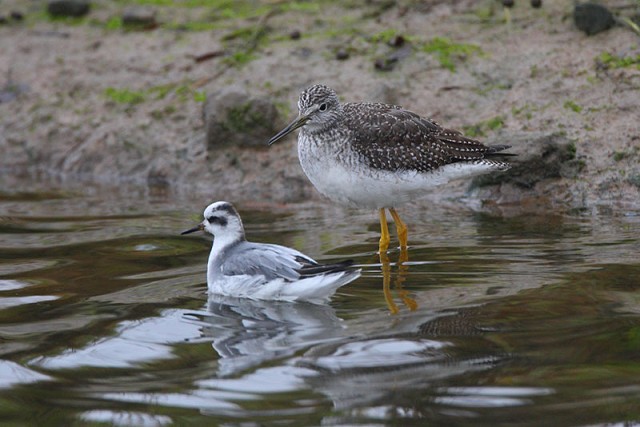
Grey Phalarope and Greater Yellowlegs, Hauxley NR, Northumberland (Photo: Tom Tams)
Grey Phalarope and Greater Yellowlegs, Hauxley NR, Northumberland (Video: FoghornsBirdingVideo)
One of the highlights of the week, though, was the arrival of two stunning male Eastern Black Redstarts, at Foreness Point (Kent) on 11th–16th and on Holy Island (Northumberland) on 16th. Although both these birds seem as clear-cut as any, four previous records were all removed from the British list as the spectre of hybridisation (between Black Redstart and Redstart) couldn't be eliminated: one on Scilly in October 1975, birds in Lincolnshire in October 1978 and October 1988, and one ringed in Kent in November 1981. But the fact that several other birds have been reported in western Europe this autumn would seem to favour a genuine arrival, and a close analysis of the wing formula and plumage appeared to show no sign of hybrid influence.
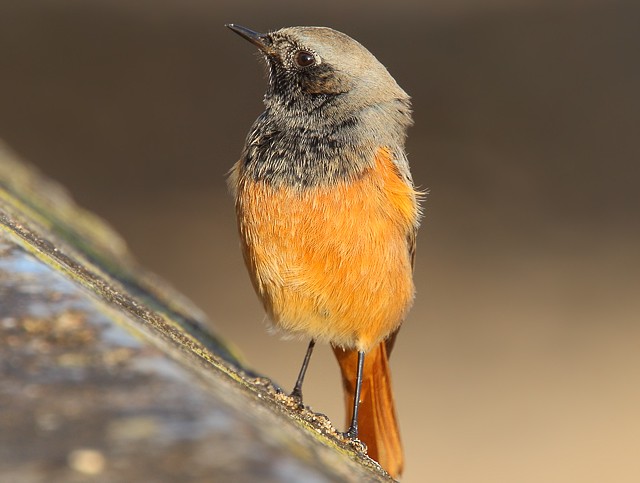
Eastern Black Redstart, Foreness Point, Kent (Photo: Steve Ashton)
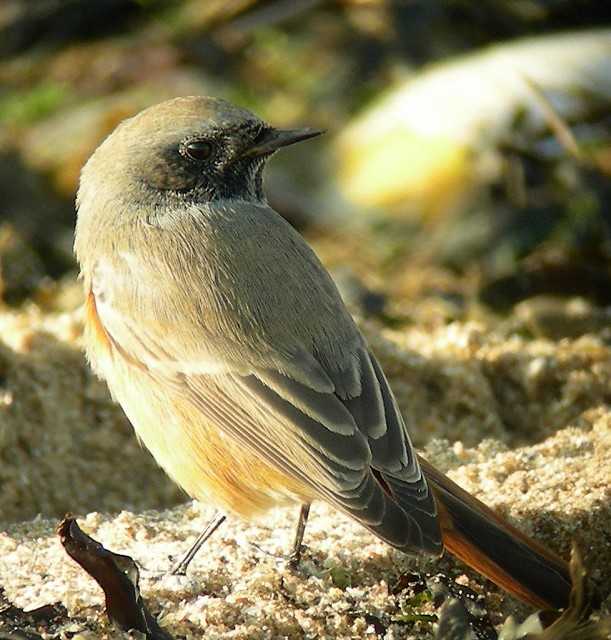
Eastern Black Redstart, Foreness Point, Kent (Photo: Doug Kelson.)
Eastern Black Redstart, Foreness Point, Kent (Video: megabrock161.)
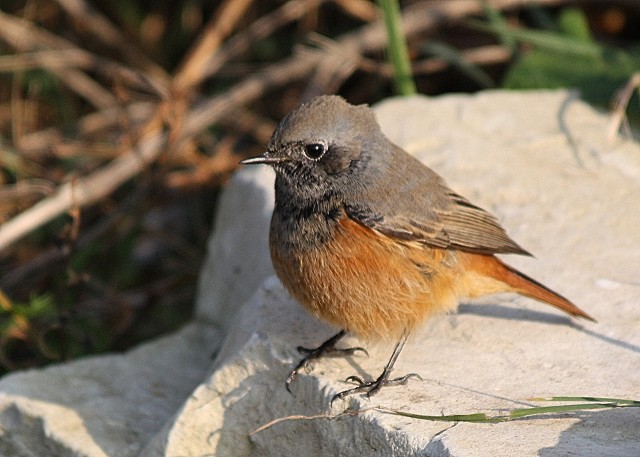
Eastern Black Redstart, Holy Island, Northumberland (Photo: Andy Mould)
A Veery in a garden on the island of Muck (Highland) on 16th won't be the easiest of birds to twitch, given that a charter is needed to get to the island long enough to be sure to connect. There have been just two mainland records, both in Cornwall, in October 1999 and the British first in October 1970. This is also the latest arrival by a fair margin; the previous latest arrived on North Uist (Outer Hebrides) on 20th October 1995.
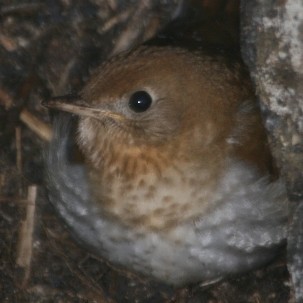
Veery, Muck, Highland (Photo: David Barnden)
The female/juvenile Bufflehead became a bit more predictable, staying put on Helston Loe Pool (Cornwall) all week. The Wilson's Snipe also remained at Lower Moors (St Mary's, Scilly) all week, with the Northern Waterthrush also staying put to 13th, though it once again became elusive. Glamorgan's first Isabelline Wheatear also remained at Wernffrwd (Gower) to 10th.
Lastly, a possible juvenile Thayer's Gull attracted much attention in Dunstaffnage Bay, Dunbeg (Argyll) on 12th–14th, though the presence of some features atypical of the species generated considerable debate.
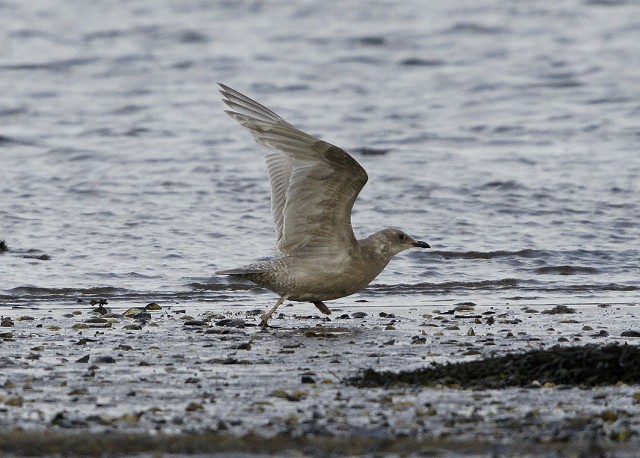
Putative Thayer's Gull, Dunbeg, Argyll (Photo: Jim Dickson)
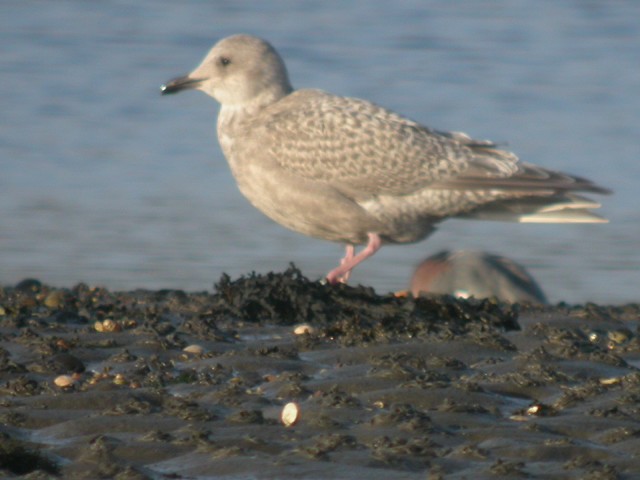
Putative Thayer's Gull, Dunbeg, Argyll (Photo: Annelise_bill)
In Sligo, the two Richardson's Canada Geese were reported again from Ballygilgan on 10th, while on Islay (Argyll) there were also two at Loch Indaal on 15th and four at Bridgend on 16th. One at Torr Reservoir (Somerset) on 12th–13th was possibly the same bird as previously at Chew Valley Lake. One at Newport Wetlands (Gwent) on 13th–15th was later reidentified as a Cackling Canada Goose and was present in the same flock as a Greenland White-fronted Goose. Elsewhere, the Todd's Canada Goose also remained in Lancashire, seen at Cleveleys on 14th. Blue-morph Snow Geese were at Lower Lough MacNean (Fermanagh) on 15th and at Balevullin, Tiree (Argyll) on 16th, and there were two Ross's Geese at Craster (Northumberland) on 15th and another at Burnham Overy and Burnham Norton (Norfolk) on 15th.
In Devon, the first-winter Red-breasted Goose remained at Exminster Marshes, Bowling Green Marsh and Topsham to 15th and an adult was with 400 Dark-bellied Brents at West Mersea (Essex) on 14th–16th. Black Brants were reported from 12 sites this week, including new birds in Counties Sligo, Mayo and Wexford, Glamorgan, Hampshire, West Sussex and Essex. Many were associated with a much wider influx of geese along the east coast, including excellent numbers of White-fronted Geese, Barnacle Geese and Tundra Bean Geese. On Fair Isle, records were smashed for both Bean Goose (59) and White-fronted Goose (74), which arrived with 21 Pink-feet and 64 Greylags. North Ronaldsay (Orkney) also saw a record count of 23 Tundra Bean Geese (beating the previous record count of two), along with up to 39 White-fronted Geese and a single Greenland White-fronted Goose. The only Ruddy Shelducks were two at Langford Lakes (Wilts) on 12th and five briefly at Saltfleetby (Lincs) on 12th.
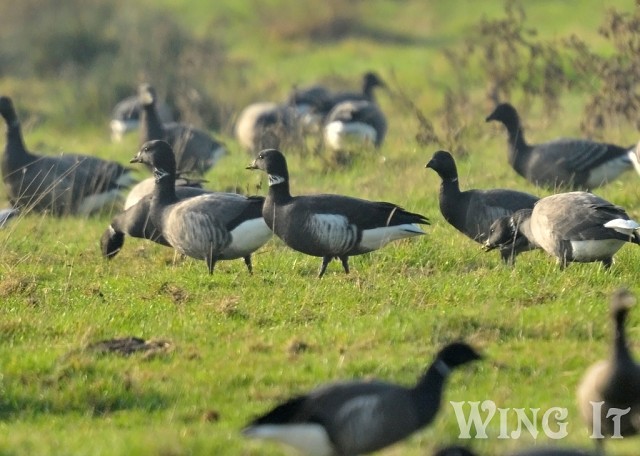
Black Brant, Cudmore Grove CP, Essex (Photo: Stephen Allen)

Tundra Bean Geese, Crail, Fife (Photo: John Anderson)
Various American Wigeon remained into the week: at Wellington Gravel Pits (Herefordshire) to 12th, Dawlish Warren (Devon) to 14th, Anglers Country Park and Wintersett Reservoir (West Yorks) to 15th and Loch Bee, South Uist (Outer Hebrides) to 16th. The regular wintering female Blue-winged Teal was reported again at Bull Island (Dublin) on 12th. Perhaps as birds continue to come out of eclipse plumage, many more Green-winged Teal were picked up this week: drakes were reported from eight widespread coastal sites. The first-winter drake Ring-necked Duck was on Blagdon Lake (Somerset) to 16th, while the only others were on Lough Inchiquin and Lough Atedaun (Clare) on 10th.
Ferruginous Ducks remained at Cockshoot Broad (Norfolk) to 12th and Dinton Pastures (Berks) to 15th, with the possible hybrid also still in residence at Lurgan Park Lake (Armagh) to 13th. The juvenile Lesser Scaup remained at Marden Quarry (Northumberland) to 13th and a drake was also at Rahasane Turlough (Galway) on 14th.
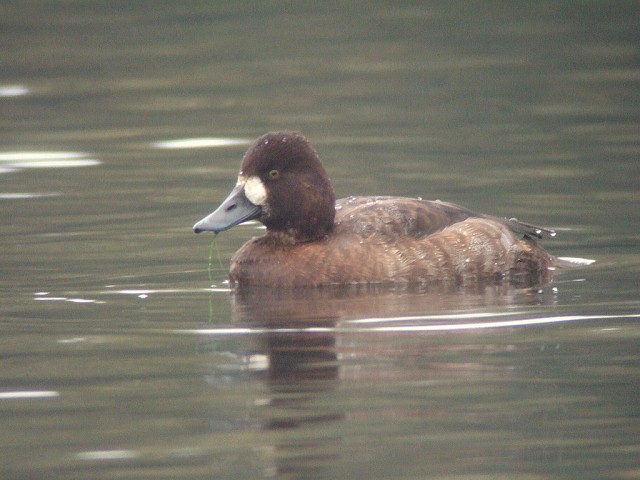
Lesser Scaup, Tynemouth, Northumberland (Photo: Andy Booth)
The drake King Eider stayed put off Burghead (Moray & Nairn) to 14th. Surf Scoters also remained off Lahinch (Clare) to 10th and Ballinskelligs (Kerry) to 12th and a drake was off Ruddon's Point (Fife) on 12th. There was also a possible at Campfield Marsh (Cumbria) on 11th. The only White-billed Divers were off St Combs (Aberdeenshire) on 13th and a moulting adult at Peninerine (South Uist, Outer Hebrides) on 14th–16th.

White-billed Diver, Peninerine, S.Uist, Outer Hebrides (Photo: Steve Duffield)
The only Balearic Shearwaters reported this week were singletons past Berry Head (Devon) on 11th and Waxham (Norfolk) on 16th. There were just two Sabine's Gulls, both juveniles in County Down: at Kearney on 12th and off Ballyquintin Point on 14th. There were four Grey Phalaropes on the sea off Kelling (Norfolk) on 16th, while singletons were in Kent, Guernsey, Northumberland, Scilly and the Outer Hebrides, and one also remained at Chew Valley Lake (Somerset).
In Shetland Great White Egret(s) were on Out Skerries on 14th and Whalsay on 15th, while further south records came from widespread English sites, including birds well inland at Idle Valley NR (Notts) to 16th and Linford (Bucks) to 13th and two at Dungeness and Harty Marshes, Sheppey (Kent). In Wales, there were also two at the National Wetlands Centre (Carmarthenshire) and at Wernffrwd (Gower, Glamorgan) and a singleton at Bosherston Lily Ponds (Pembrokeshire) on 13th. There were two Cattle Egrets at Grouville Marsh (Jersey) on 11th–14th and singletons also remained at Lydney (Glos) to 11th, Thorney Island (West Sussex) to 15th and Blakeney Freshmarsh (Norfolk) to 16th, the last with up to 74 Barnacle Geese and 80 White-fronts. New birds were also at Cheekpoint (Waterford) on 12th and at Welwick and Easington (East Yorks) on 15th. There was just one White Stork reported, around Leven (Fife) on 14th–15th. A Glossy Ibis commuted across the Devon/Cornwall border all week and other singletons were reported from eight sites, including new birds at Avenue Washlands and Willington Gravel Pits (Derbys) on 11th–12th, Burton Mere Wetlands (Cheshire) on 12th–14th and Malltraeth Marsh (Anglesey) on 15th.

Great White Egret, Greylake RSPB, Somerset & Bristol (Photo: John Hansford)

Cattle Egret, Lydney, Gloucestershire (Photo: Lewis Thomson)

Glossy Ibis, Burton Mere Wetlands RSPB, Cheshire (Photo: Ivan Ellison)
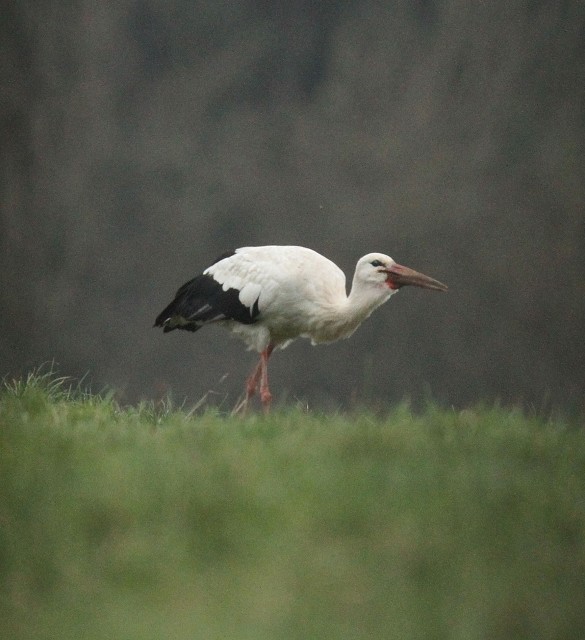
White Stork, Leven, Fife (Photo: Jacqui Herrington)
Most birds having now headed south, there were just three reports of Pallid Harrier this week. Birds remained at Power Head and Ballycotton (Cork) to 14th and 15th respectively and a juvenile was briefly at Lizard (Cornwall) on 15th. There was also a further possible, at Sixpenny Handley (Dorset) on 15th. The Northern Harrier remained at Tacumshin (Wexford) to 13th. Southeasterly winds brought an unexpected Rough-legged Buzzard to Fair Isle on 12th–13th; others were at a small number of sites between north Lincolnshire and West Sussex, including two at Well Woods (Norfolk) on 15th and one in off the sea at Grainthorpe Haven (Lincs) on 15th. Also in off was a white-morph Gyr Falcon at Power Head (Cork) on 14th, though sadly it didn't stop. There was a further report of a white morph at Altcar Withens (Lancs) on 16th, which may have been in the area some time, and an unconfirmed report of a grey-morph bird at the East India Dock Basin (London) on 10th.

Pallid Harrier, Power Head, Cork (Photo: Sean Cronin)
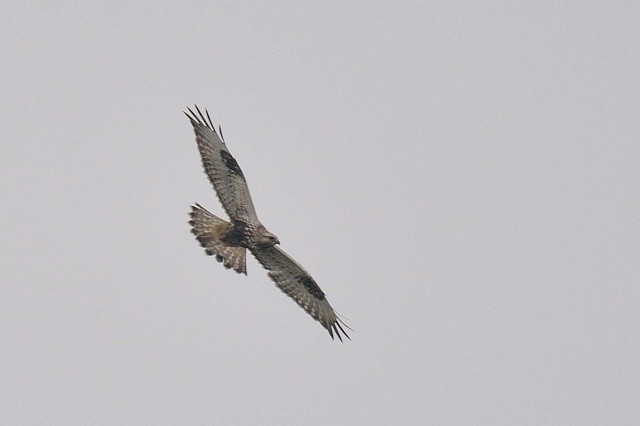
Rough-legged Buzzard, Burpham, West Sussex (Photo: Brian Harrison)
Mirroring the large arrival of grey geese this week were some impressive Common Cranes flocks. Away from the usual areas, birds were reported from many western sites, including at least 33 in Cork (19 at Midleton and 14 at Ballincollig) and flocks of 24 around Wadebridge and six at Lizard (Cornwall).

Common Crane, Midleton, Cork (Photo: Sean Cronin)
Common Crane, St Issey, Cornwall (Video: chippler01)
American Golden Plovers remained at Rosscarbery (Cork) to 12th and Butt of Lewis/Loch Stiapavat (Lewis, Outer Hebrides) to 13th and there was just one new bird, a juvenile at Ardmore Point, Lough Neagh (Armagh) on 13th. Other waders remaining included Lesser Yellowlegs at Alaw Estuary (Anglesey) to 13th and on Tresco (Scilly) to 15th and the Spotted Sandpipers at Chew Valley Lake (Somerset) and Plym Estuary (Devon), both to 15th. In Somerset, both Long-billed Dowitchers remained at Blagdon Lake to 15th and the singleton also remained at Wigtown (Dumfries & Galloway) to 15th.
The Semipalmated Sandpiper and two White-rumped Sandpipers remained at Sgarasta Mhor (Harris, Outer Hebrides) to 10th and the only other Semi-P was at Greatham Creek and Seal Sands (Cleveland) again on 11th–16th. The only other White-rump was at Ballycotton (Cork) on 15th and there were single reports of Temminck's Stint at Cotswold Water Park (Wilts) on 10th–13th, Baird's Sandpiper on North Ronaldsay (Orkney) to 12th, and Pectoral Sandpiper at Ardmore Point, Lough Neagh (Armagh) on 13th.
As usual the Dungeness (Kent) Glaucous Gull remained, and there was one on North Ronaldsay (Orkney) and also juveniles at Labost (Lewis, Outer Hebrides), Redland (Orkney), Peterhead (Aberdeenshire), Bardsey Island (Gwynedd) and Annagh Marsh (Mayo). There were rather more Iceland Gulls, reported from 14 sites, mostly in the north. The only English bird was a second-winter at Beddington Sewage Works (London) on 11th, while in Ireland juveniles were at Kinsale Harbour (Cork) and Cuskinny Marsh (Cork) on 12th. Many of last week's Ring-billed Gulls remained into the week, with birds reported from Stornoway Harbour (Lewis, Outer Hebrides) to 12th, Gosport (Hants) to 13th, Nimmo's Pier (Galway) to 14th, and Groomsport (Down) and Dunbeg (Argyll) to 15th, though it appears that the famous 'Rossi' may not be returning to Essex this winter. There was also a first-winter at Loch an Eilein, Tiree (Argyll) on 16th. The probable adult Azorean Yellow-legged Gull continued to tease, roosting at Belvide Reservoir (Staffs) on 10th and Chasewater (Staffs) on 12th and 14th–16th and appearing on the tip at Cannock (Staffs) on 13th. The Forster's Tern was again around Doorus (Galway) to 12th.

Ring-billed Gull, Groomsport, Down (Photo: Derek Charles)
Norfolk saw yet another Pallid Swift, this time at Hunstanton on 11th–12th, while one found grounded in Dorset on 12th was later released at Portland but promptly taken by a Sparrowhawk. The Hoopoe remained at Climping (West Sussex) to 10th and others were at Holme Dunes (Norfolk) on 12th–15th and Clogher Head (Louth) on 14th. Shore Larks were reported from eight sites from Shetland to Kent, with the highest counts of five at Holkham Gap (Norfolk) and three at Sandwich Bay (Kent) and The Naze (Essex).

Hoopoe, Climping, West Sussex (Photo: Howard Kearley)
There were several records of Richard's Pipits, mostly in a band across Cleveland, East Yorkshire, Lincolnshire, Lancashire, Manchester, Cheshire and Conwy. The only outlier was on Skomer (Pembrokeshire) on 12th. All the week's Olive-backed Pipits were in the Northern Isles: on Fair Isle to 12th and, on Shetland, at Sumburgh to 12th, Wester Quarff on 15th, Gulberwick on 16th and Norwick (Unst) on 16th.
The only Red-backed Shrike was a juvenile at Fort Hommet (Guernsey) on 13th, In contrast, Great Grey Shrikes were again widespread: there were four in the Northern Isles and birds at a further 27 sites in England as far southwest as Arne (Dorset), including two at Thursley Common (Surrey) again to 12th.

Great Grey Shrike, South Wheatley, Nottinghamshire (Photo: Rob Smith)
The week's easterlies also brought two late Red-flanked Bluetails. One at Whitburn Coastal Park (Durham) on 10th was the third there this autumn, and one was ringed at Landguard (Suffolk) on 14th. There is just one later record than this, of a bird at Gibraltar Point (Lincs) on 15th–16th November 2002. Whitburn Coastal Park also saw an exceptionally late Nightingale on 12th; the date caused many to query its subspecific identification but, despite their efforts it looked to be a nominate-race bird. This was just the sixth record for the county, three of which have been in the last two years. The only Bluethroat was one sadly found dead in a car park at Seaham (Durham) on 16th. Desert Wheatears remained at Loftus (Cleveland) and Nanjizal Valley (Cornwall) to 10th and there were four new birds: a male at Holme Dunes (Norfolk) on 10th–12th moved to nearby Titchwell on 14th–15th, another male was on Skomer (Pembrokeshire) on 15th, and females were at Dungeness (Kent) on 15th and Pleinmont (Guernsey) on 11th–15th. The last was the fourth record for the Channel Islands, all of which have been on Guernsey. In County Wicklow, two males on Bray Head on 13th–15th were just the fifth and sixth for Ireland, the first for the county and also the first time two birds have been recorded together in the British Isles.

Red-flanked Bluetail, Whitburn Coastal Park, Durham (Photo: Adam Williams)
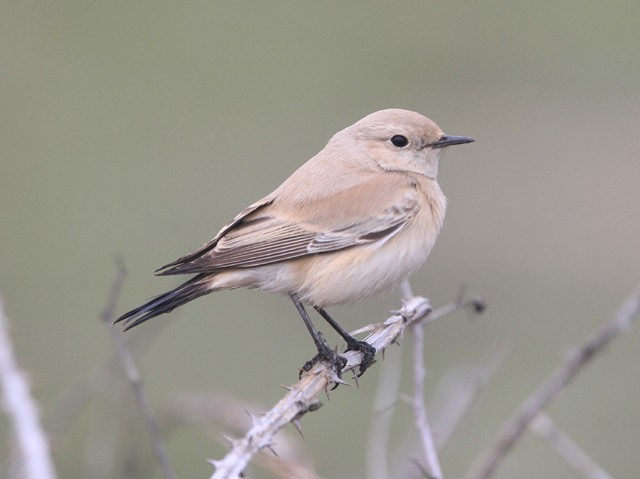
Desert Wheatear, Dungeness BO, Kent (Photo: Martin Casemore)

Desert Wheatear, Bray, Wicklow (Photo: Graham Clarke)
Waxwings were widespread again this week, present at a large number of coastal sites along the entire east coast. Birds also penetrated as far as Lancashire, South Yorkshire, Derbyshire, Staffordshire, West Midlands and Herefordshire, and one was heard at Newbridge (Gwent) on 12th. The highest counts were 60 in Budle Bay (Northumberland), 40 in Gullane (Lothian), 40 in Hemsby (Norfolk), 28 in St Andrews (Fife), 25 in Barlborough (Derbys) and 23 at Stafford (Staffs).

Waxwing, Norwich, Norfolk (Photo: Nick Appleton)
In Norfolk, the Melodious Warbler remained at Happisburgh to 10th. Dusky Warblers were reported from 14 sites along the east coast, including two at Spurn (East Yorks) on 14th, and a further three were in Cornwall and Scilly. In Scotland, new Pallas's Warblers were at Balmedie Country Park (Aberdeenshire) on 13th–15th and Trondra (Shetland) on 15th, and in Ireland at Power Head (Cork) on 13th–16th and Brownstown Head (Waterford) on 16th. English birds were at just eight sites in East Yorkshire, Lincolnshire, Norfolk, Suffolk, the Isle of Wight and Dorset. Most of the week's Yellow-browed Warblers were in the east, at numerous coastal sites. There were also birds in West Sussex and Dorset, and at Lizard (Cornwall) on 13th, and two were on St Mary's (Scilly) on 16th. In Ireland, singletons were at Bray Head (Wicklow) on 13th and Power Head (Cork) on 14th. The easterlies brought further Hume's Leaf Warblers, with birds at 10 sites including three in Shetland and two in Norfolk, and another at Winspit Valley (Dorset) on 12th. The only Barred Warbler was one ringed at Cissbury Ring (West Sussex) on 12th. On Scilly, the Central Asian Lesser Whitethroat remained on St Agnes to 10th, and a possible was at Donna Nook (Lincs) to 12th.

Hume's Leaf Warbler, Lowestoft, Suffolk (Photo: Kevin Du Rose)

Hume's Leaf Warbler, South Gare, Cleveland (Photo: Martyn Sidwell)
A Red-breasted Flycatcher was on St Agnes (Scilly) on 10th–11th and just one of last week's three Penduline Tits at St Ouen's Pond (Jersey) remained to 11th. Another at Oare Marshes (Kent) on 16th may be the same as at Dungeness recently.
There was just one Little Bunting, on St Mary's (Scilly) on 13th, and a late Serin was also on the island on 12th. The week's peak counts of Lapland Bunting were 25 at Burnham Overy (Norfolk), 20 at Trimingham (Norfolk) and 12 at Donna Nook (Lincs), and inland birds were over Hellifield Flash (North Yorks) and Stainton (South Yorks) on 13th. The only Irish bird was at Agnew's Hill (Antrim) on 10th.

Little Bunting, St. Mary's, Isles of Scilly (Photo: Martin Goodey)
Juvenile Rose-coloured Starlings remained at Power Head (Cork) to 13th and in Inverkeithing (Fife) to 12th, while a new bird was at Lodmoor (Dorset) on 13th–14th. There was also a report of one with 2,000 Starlings over Thurlestone (Devon) on 13th which then roosted at Slapton that evening. Interestingly, last week's male Northern Bullfinch was retrapped at Shuart (Kent) on 16th.
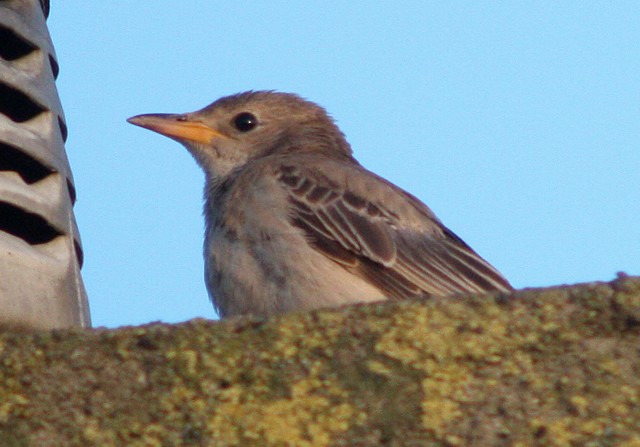
Rose-coloured Starling, Inverkeithing, Fife (Photo: Willie McBay)
Photo of the Week:10th–16th November
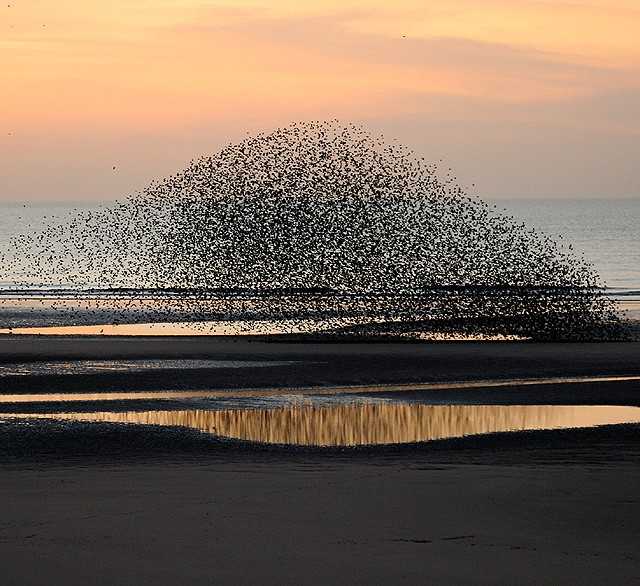
Starling, Blackpool, Lancashire (Photo: Jackie Moreton)
Although most have diminished in recent years, Starling roosts are still one of nature's great spectacles. Photos of the gathering flocks look particularly good with warm sunset hues as a backdrop. As an added bonus, the roost at Blackpool's North Pier is on a west-facing stretch of coast and so the sun sets over the sea, providing an even more interesting background. Making the most of this opportunity, local bird photographer Jackie Moreton captured a dense flock of these birds as they gathered on the beach before settling on the pier. Classic aesthetic factors such as line, shape, pattern, colour and texture are used to good effect in some branches of photography, but can be quite difficult to incorporate into bird images. Here, shape in particular is well represented, with the Starling flock mirroring the shape of the tidal pools, whilst the foreground pool (literally) reflects the flock in return. A great first Photo of the Week for Jackie!
Other notable photos

Short-eared Owl, undisclosed site, Northamptonshire (Photo: Graham Munton)

Jay, undisclosed site, Lancashire (Photo: David Cookson)

Spoonbill, Draycote Water, Warwickshire (Photo: A J Haynes)

Sparrowhawk, Llandrindod Wells, Powys (Photo: Kev Joynes)

Black Redstart, Minsmere RSPB, Suffolk (Photo: Ian Clarke)
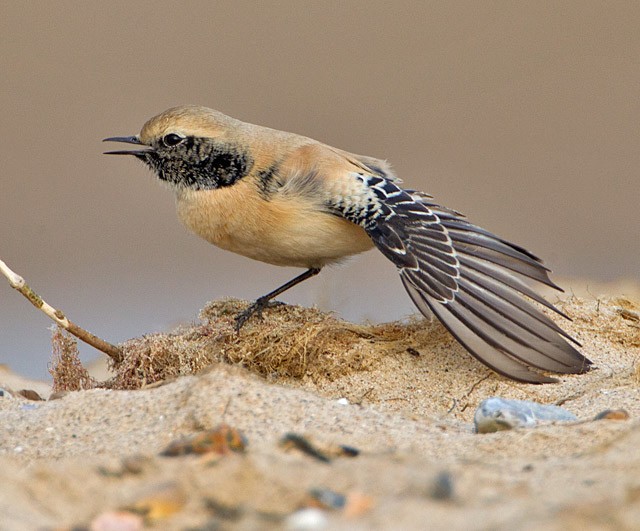
Desert Wheatear, Thornham, Norfolk (Photo: Chris Upson)

Waxwing, Hemsby, Norfolk (Photo: Perry Fairman)
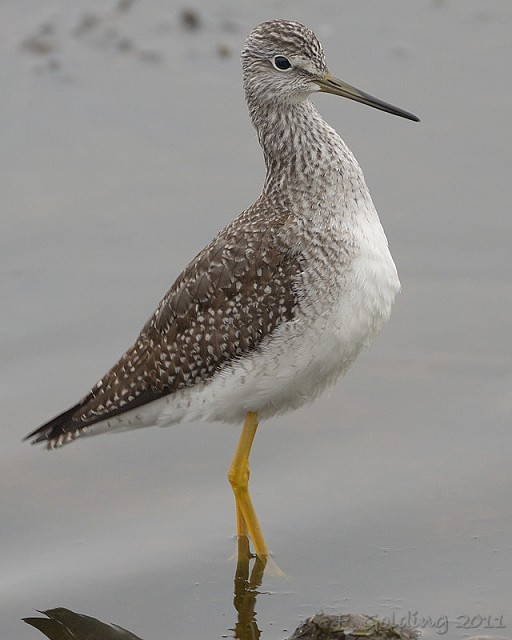
Greater Yellowlegs, Hauxley NR, Northumberland (Photo: Frank Golding)

Hoopoe, Climping, West Sussex (Photo: Howard Kearley)

Bittern, Dungeness RSPB, Kent (Photo: Brian Harper)

Little Egret, Minsmere RSPB, Suffolk (Photo: Jon Evans)

Black-tailed Godwit, Belfast Lough RSPB, Antrim (Photo: Ian Dickey)

Blue Tit, Dartmoor, Devon (Photo: Charlie Fleming)

Nuthatch, Hungary (Photo: Eduardo Balogh)

Lesser Redpoll, Ogston Reservoir, Derbyshire (Photo: Clare Ward)

Common Buzzard, Spital, Cheshire (Photo: Steve Round)

Sombre Tit, Turkey (Asian) (Photo: Mustafa Sozen)

